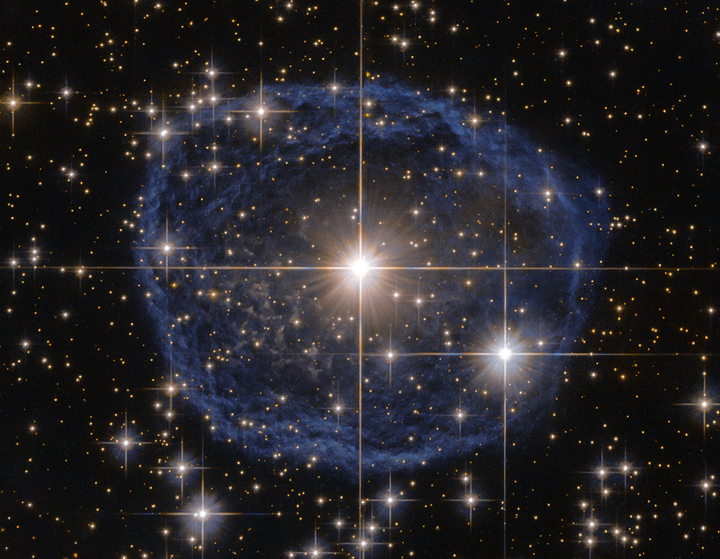The death of a star has never been so beautiful.

Astronomers from NASA and the European Space Agency (ESA) imaged this beautiful Wolf-Rayet star — known as WR 31a — using the Hubble Space Telescope.
READ MORE: 25 years of Hubble — 5 amazing things it has taught us about our universe
Wolf-Rayet stars are at least 20 times more massive than our own sun and have a short lifespan, about a few hundred thousand years (that’s young in astronomical terms!). The adage “live fast and die young” can be best applied to these large, bright stars.
Before they die, however, Wolf-Rayet stars expel an interstellar cloud of gases (mainly hydrogen and helium, as well as other gases). When the stellar wind interacts with the hydrogen that’s been ejected, it creates a beautiful ringed nebula, by definition, a cloud.
On the plus side, out of death comes birth: This interstellar dust cloud will one day create stars and planets.
WR 31a is 30,000 light-years from Earth and can be found in the constellation Carina. It is invisible to the unaided eye.
To see a high-res image, click here.




Comments